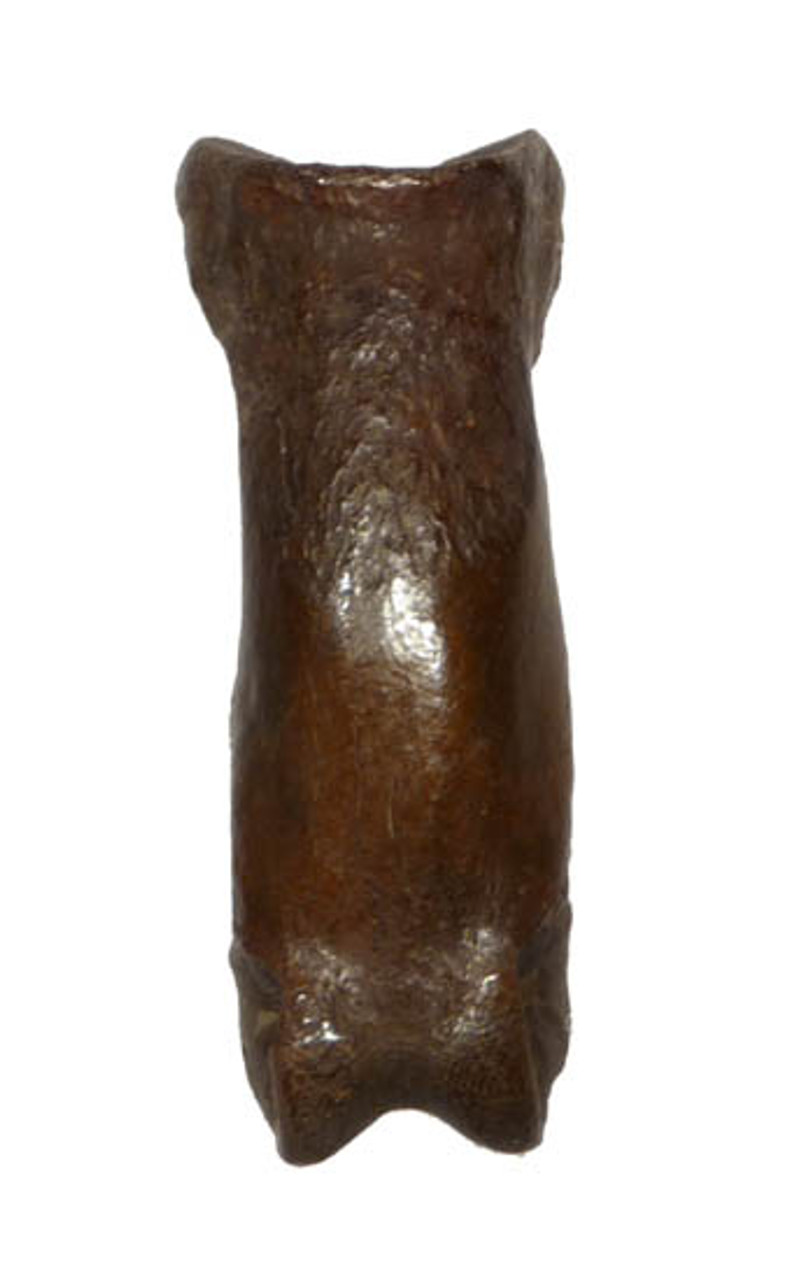Product Description
ITEM #
|
LM6-008
|
||
ID
|
Canis dirus
|
||
FOUND
|
Underwater Marine Site, Gulf of Mexico - Florida, U.S.A.
|
||
AGE
|
PLEISTOCENE: 40,000 - 10,000 million years
|
||
SIZE
|
1.25" long
|
||
CONDITION
|
NO REPAIR OR RESTORATION
|
||
NOTE
|
NICE AFFORDABLE DIRE WOLF FOSSIL
|
||
INCLUDES DISPLAY BOX - Actual Item - One Only
Comes with a certificate of authenticity / information sheet |
|||
From an unusual underwater marine Pleistocene deposit in the Gulf of Mexico off the coast of Florida, U.S.A., this is pristine perfect specimen of a finger bone of the notorious Dire Wolf, scientifically known as Canis dirus. The specimen has is complete with extremely dense bone surface of the finest preservation. Entire bone is a natural espresso brown hue. Quality fossils from this famous and deadly Ice Age North American carnivore are HIGHLY PRIZED and RARE! Guaranteed NO REPAIR and NO RESTORATION. This finest grade tooth is AS FOUND!
The DIRE WOLF is one of the most popular and certainly, was one of the most dangerous predators of the last Ice Age in North America. First described in 1858 from a find in Evansville, Indiana, U.S.A., the Dire Wolf ranged across North America as the most prevalent canid during the late Pleistocene. The Dire Wolf was the largest wolf that ever lived during this time period. With its massive skull larger than any other wolf species known, and extremely large muscle structure in the jaws, this predator was able to catch and hold very large prey and crush bone in its jaws lined with its enlarged carnassial teeth. It has been estimated that the Dire Wolf was as much as 20 percent larger than the largest known Alaskan wolves.
 US DOLLAR
US DOLLAR
 EURO
EURO
 AUSTRALIAN DOLLAR
AUSTRALIAN DOLLAR
 CANADIAN DOLLAR
CANADIAN DOLLAR
 POUND STERLING
POUND STERLING








